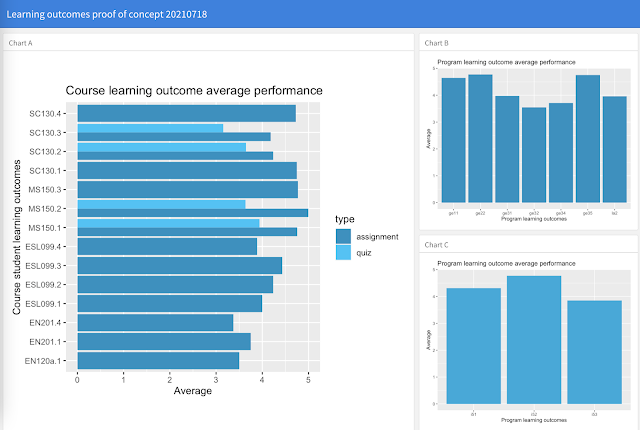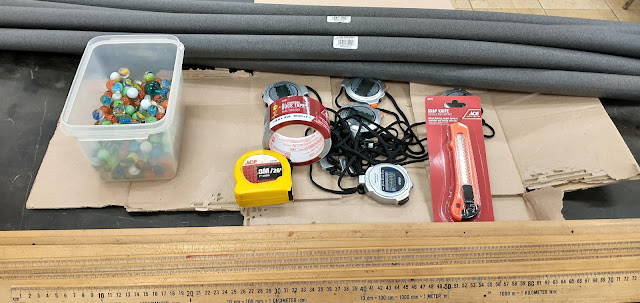From Canvas outcome results to R to flexdashboard

A week ago I began a journey to explore the admin outcomes report from Instructure Canvas. I began by struggling my way through to a chart , learned to select, mutate, and join with dplyr, and then connected two dimension tables separated by a main data table where each dimension table had a different primary key. This last step took me beyond where Google Data Studio can go at present - Data Studio must have a common key across all joined tables. Today I took the results from the week and built a static dashboard of some of the results using flexdashboard. The code driving the dashboard was cleaned up including dropping comments and simplifying by some up front ETL work on the underlying tables, including the removal of a number of variables. The only error today was forgetting that to build the web page one has to issue an rmarkdown render command, rmarkdown::render("outcomes_20210718.Rmd") This week also included my own first foray into watching videos to learn a new s









